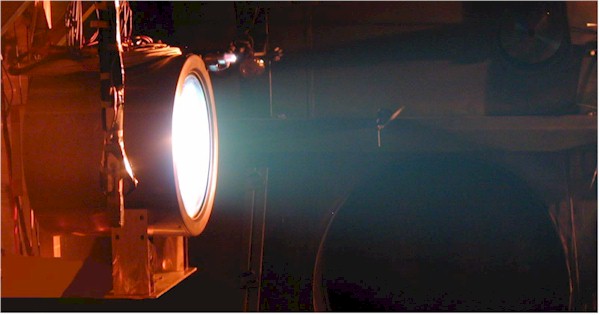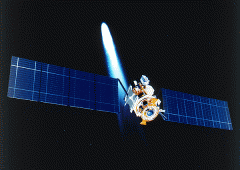
NASA’s Evolutionary Xenon Thruster (NEXT) has established a new record for the longest test duration of any type of space propulsion system in history, having successfully operated for more than 48,000 hours. This duration—equivalent to 5.5 years—has been achieved within a high-vacuum test chamber at NASA’s Glenn Research Center in Cleveland, Ohio, and its success carries tantalizing possibilities for future deep-space mission applications.
The core ionization chamber for the test engine was assembled by NASA-Glenn, with Aerojet-Rocketdyne—which last week officially merged the United States’ two largest commercial rocket-power entities in a $550 million deal—responsible for designing and building its ion acceleration assembly. NEXT produces a yield of just under 7 kW and is a form of “solar electric” propulsion, utilizing electricity generated by its host spacecraft’s solar array to accelerate xenon propellant to velocities of up to 90,000 mph. This highlights a significant performance improvement over conventional chemical engines and carries the potential to support many future deep-space missions outlined in NASA’s Planetary Science Decadal Survey.

“We will voluntarily terminate this test at the end of this month, with the thruster still fully operational,” said Michael J. Patterson, NEXT principal investigator at NASA-Glenn. “Life and performance have exceeded the requirements for any anticipated science mission.” The scope of those missions is varied and exciting—including voyages to Saturn orbit and returning samples from Mars’ moon, Deimos—and was discussed at length in the National Research Council’s Planetary Science Decadal Survey for 2013-2022. This placed specific emphasis on a Mars Astrobiology Explorer-Cacher (MAX-C), the Jupiter Europa Orbiter (JEO), and a Uranus orbiter and atmospheric entry probe. Although NASA’s response to the Survey was supportive, it also paid tribute to the brutal reality that many exotic missions face a difficult genesis in the current global economic climate.
Although the prospects for several of the Survey’s proposed missions remain grim, the successful long-duration NEXT test offers a measure of encouragement that the technology for future ventures to the distant reaches of our Solar System exists and has been practicably demonstrated. The NEXT thruster is about three times as powerful as the NSTAR ion engine used by such missions as Dawn and Deep Space-1. During its NASA-Glenn tests, it consumed 1,918 pounds of xenon … and yet produced the same specific impulse as an engine powered by 22,000 pounds of conventional chemical rocket propellants.
For Aerojet Rocketdyne, it is an exciting touchstone for future exploration. “Aerojet Rocketdyne fully supports NASA’s vision to develop high power solar electric propulsion for future exploration,” said Julie Van Kleeck, vice president for space advanced programs. “NASA-developed next generation high power solar electric propulsion systems will enhance our nation’s ability to perform future science and human exploration missions.”
Want to keep up-to-date with all things space? Be sure to “Like” AmericaSpace on Facebook and follow us on Twitter:@AmericaSpace




Not the “…same specific impulse as an engine powered by 22,000 pounds of conventional chemical rocket propellants”, but the same TOTAL impulse. The specific impulse of ion thrusters is much higher than chemical rockets.
This is the classic case of the “good news, bad news” scenario. Great news about the NASA Evolutionary Xenon Thruster establishing a new record for longest test duration of any space propulsion system in history, very bad news in that although there are new “varied and exciting” science missions which could use NEXT, “the prospects for several of . . . the missions remains grim” because of economic conditions. Imagine what could be discovered using the NEXT propulsion system if NASA had one cent of every federal budget dollar instead of 0.48 of one cent. Yeah, right, and imagine if political decisions we made based upon logic and reason.
What was the specific Impulse,Watts/mN and other data?